Economics
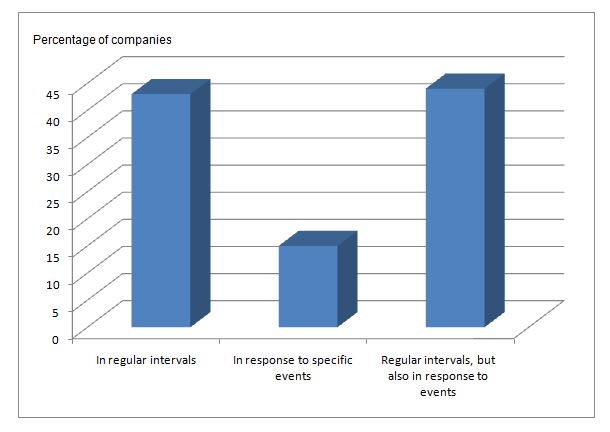
This article critically evaluates the notion of firm and transaction costs and explores how do firms set prices. The article starts with setting context for discussions and this is followed by critical evaluation of firms from the perspective of transaction costs. Moreover, the article contains critical analysis of price setting practices of firms by referring to set of relevant studies and theoretical frameworks. How do firms set prices? Although the range of issues discussed in this paper are not new and they have been previously addressed by many economists in varying levels of depth, importance of firms, evaluation of transaction costs approach and the nature of price-setting strategies engaged by firms may be greater than ever before. In other words, recent global economic crisis of 2007 – 2009 has revealed significant shortcomings of liberal market economy at multiple levels, and from this perspective reassessment of the core notion of firms, relevance of transaction costs and price setting practices of modern businesses may provide valuable data in terms of developing macroeconomic policies to minimise chances of economic crises in the future. The most popular price setting techniques include market level pricing, competition pricing, variable and fixed mark-up pricing, pricing set by government regulatory agency, and customer-set pricing (Anderton, 2008). Each of these price setting techniques has its own advantages and disadvantages and selection of any particular technique depends on a wide range of factors such as the nature of products and services, intensity of competition, customer purchasing power etc. Additionally, pricing strategies can be divided into new-product pricing, differential pricing, psychological pricing, product-line pricing and promotional pricing categories (Pride et al, 2010: 386). The choice of a pricing strategy according to this particular categorisation depends on the business strategy of the company. For example, the level of effectiveness of the…
By John Dudovskiy
Category: Economics
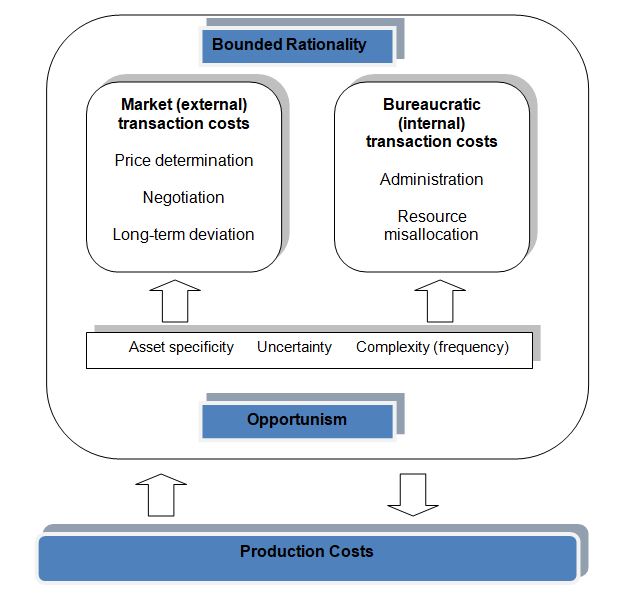
What is a firm? In essence, as private sector organisations firms pursue the main objective of profit maximisation. However, this is the most basic approach to firms and roles and responsibilities of firms can be studied in a greater level of depth with the application of relevant theoretical frameworks. There are several main theories of the firm and distinction can be made between these theories on the basis of approach adopted towards relationships between the firm and society (Sloman et al., 2013). For example, one of the earliest approaches to firm, ‘black box’ perspective perceives firms as economic entities that transform input into output in a profitable manner. ‘Black box’ perspective involves “how production and cost functions interact with demand on the market, i.e. the emphasis is on technical matters and how firms function in the context of the market” (Dietrich, 2007:19). ‘Black box’ perspective to firms can be criticised on the grounds of being overly abstract and general, and it does not take into account the impact of firm-specific factors. Transaction cost can be defined as “the costs incurred when firms buy inputs or services from other firms as opposed to producing them themselves” (Sloman et al., 2013:33). Transaction cost economics originates from the work of Ronald Coase who argued that “firms exist to economise on the costs of using the market” (Sykuta, 2010: 39). In other words, Coase perceives the cost of using the price mechanism as the main profit motivation for firms. Coase insisted firms to be perceived in real-life environment taking into account specifications of the real world, as well as, transaction costs of alternative organisational structures. Transaction cost economics is associated with Oliver Williamson, who expanded the work of Coase (1937) by increasing the levels of focus on organisational forms and associating business management with…
By John Dudovskiy
Category: Economics

This essay critically analyses the level of destructive impact of colonialism on China’s growth output between the 1840s and the 1940s. The essay contains the contrast of opposite arguments regarding the topic and supports the argument confirming destructive impact of colonialism on China’s growth output between the 1840s and the 1940s by providing relevant and valid justifications. A study of economic history can provide valuable knowledge to economic theorists and practitioners in terms of dealing with economic challenges of present and the future. An in-depth analysis of factors causing the level of economic growth to slow down in particular is necessary so that these factors can be dealt with to fuel economic prosperity in any given region. Colonialism can be defined as “the control or governing influence of a nation over a dependent country, territory, or people” (Colonialism, online, 2016). While forming new colonies may prove to be a profitable strategy for powerful countries in many levels, economies that become victim to colonialism experience a set of substantial economic and social setbacks such as loss of sovereignty in terms of using economic resources, and negative impact upon cultural identity. The essay starts with assessing the level of China’s economic growth between the 1840s and the 1940s providing evidences why it was slow for this specific period. This is followed by discussions of colonialism and its negative impacts on the level of China’s economic growth between the 1840s and the 1940s. In order to adhere to the specified word limit for this essay political implications of colonialism are not addressed in this essay, and the main focus have been made on effects of colonialism on national economics using the case study of China. Moreover, an alterative viewpoint on the issue is also explored in this essay by assessing the impact of…
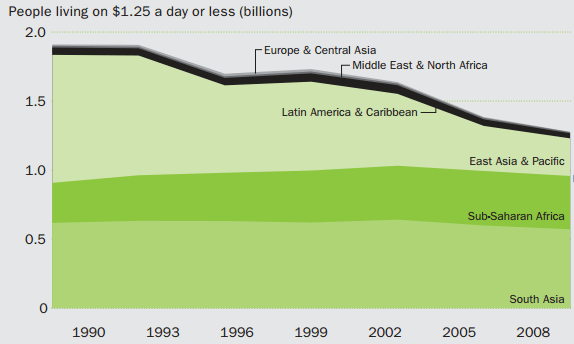
Rapid technological development during the last several decades coupled with a series of breakthroughs in information technology has immensely contributed to the development of national economies for a wide range of countries with positive implications on standards of life of people. At the same time, global poverty still remains one the most pressing issues with almost half of the world – more than 3 billion people living on less than $2.50 a day (Shah, 2016, online). The issue of global poverty is periodically addressed by a set of organisations such as World Bank, One International, WHO, CARE and others, as well as, within the framework of The Group of Twenty (G20) forum. This article represents a critical assessment of the role of World Bank in particular in dealing with global poverty. The article starts with the general discussions about the World Bank and its current contribution in eliminating global poverty. This is followed by analysis of criticism of World Bank performance in dealing with global poverty. Moreover, this article identifies potentials for World Bank to deal with global poverty more effectively. The World Bank Group is an international financial institution that pursues its mission of ‘Help Reduce Poverty’ with the participation of 188 countries. The World Bank Group consists of five organisations that are The International Bank for Reconstruction and Development (IBRD), The International Development Association (IDA), The International Finance Corporation (IFC), The Multilateral Investment Guarantee Agency (MIGA), and The International Centre for Settlement of Investment Disputes (ICSID). Each of these organisations contributes to World Bank mission in a unique way. It is important to clarify that generally the term ‘World Bank’ refers to only IBRD and IDA, and these two organisations along with IFC, MIGA, and ICSID are incorporated within the World Bank Group. Within the scope of this…
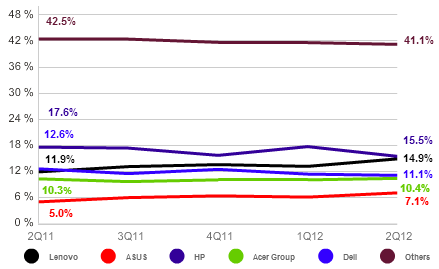
1. Introduction Rapid and dramatic changes in consumer technology market in the global scale are compromising the effectiveness of competitive advantage for many players in the marketplace. Hewlett-Packard Company (HP) can be specified as one of the giants in the industry and the company is finding difficult to address modern challenges in its market in an effective manner. HP is experiencing loss of sales and profitability due to a combination of certain factors discussed in this paper. Behind the overall 7% sales decline in the third quarter of 2012 lay 25% decline of sales of PCs and 15% decline of consumer printers (Walters, 2012). The public acknowledgement of the issue of declining profitability and pessimistic sales growth forecast made by HP President and CEO Ms. Meg Whitman on October 3, 2012 has caused the fall of HP share prices by 11% on the same day. Moreover, according to estimations of a global research agency, Millward Brown (2012), HP brand value has declined 35% in 2012 compared to 2011, and the company has moved down from 18th place to 26th in the list of Top 100 Most Valuable Global Brands within the same period. This article represents a critical analysis of declining profitability of HP using an analytical method. The article starts with introducing HP corporate profile and relevant background information. This is followed by a critical analysis of major factors contributing to the loss of profitability at HP. Namely, factors discussed in a detailed manner include increasing popularity of computer tablets, economic uncertainties in Europe, and leadership challenges. Moreover, this article proposes recommendations for HP senior level management in dealing with its current problem of declining profitability and contributing to long-term growth of the company. 2. HP: Corporate Profile Founded in 1939 by W.R. Hewlett and D. Packard, HP has been…
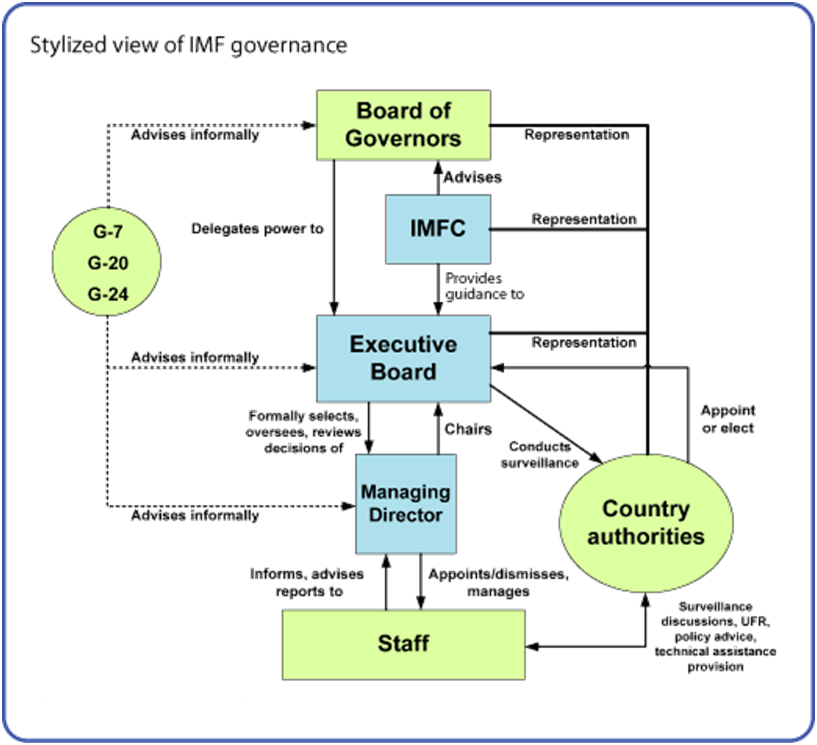
Abstract The International Monetary Fund (IMF) as one of the leading global financial organisations that deals with the issues of securing financial stability, facilitation of international trade, promoting economic growth in a sustainable manner, and poverty reduction in a global scale. There are mixed opinions about the role and performance of organisation in dealing with these issues. Some people perceive IMF to be an important organisation making valuable contribution to macroeconomic stability, whereas others blame the organisation for financial problems within specific countries and areas. Nevertheless, nowadays IMF has to deal with a set of complex challenges in local and global scales. This paper attempts to critically evaluate a set of issues directly related to IMF performance. The paper has identified major challenges faced by IMF to include its governance structure, increasing level of politicisation, leadership challenges, performance evaluation difficulties, and dealing with social instability. займы срочные в день обращения Moreover, necessary changes have been proposed for IMF that should assist in dealing with the challenges the organisation is facing. These changes include reforming IMF governance, gaining focus on role and objectives, developing performance accountability frameworks, improving lending policy, and increasing the level of comprehensiveness in country analysis. 1. Introduction The International Monetary Fund (IMF) is “an organization of 188 countries, working to foster global monetary cooperation, secure financial stability, facilitate international trade, promote high employment and sustainable economic growth, and reduce poverty around the world” (About IMF, 2016). IMF was set up during Bretton Woods Agreements in 1944 with only 44 countries and it is governed by a Managing Director and Chairman of the Executive Board, currently Christine Lagarde, who is assisted by the First Deputy and three other Deputy Managing Directors. The Articles of Agreement of IMF state that the Managing Director “shall be chief of the operating…

1. Introduction Socially desirable merit goods are “goods that society deems so valuable that everyone should have them” (Frischmann, 2012, p.45). There are two basic characteristics of merit goods: the value of the good is not usually fully appreciated at the time of consumption, and consumption of merit goods has positive effects to other individuals (Economics Online, 2014). This report represents a brief assessment of various aspects of primary education in the UK as an important merit good. The report starts with assessing the role of the UK government in providing primary education and this is followed by analysis of possibilities for private sector to provide primary education. Moreover, the report includes discussions of positive externalities of primary education and assesses the possibilities of market failure if the provision of primary education was left to provide to free market. 2. The Role of Government in Providing Primary Education Merit goods can be explained as “a product that the government believes consumers undervalue and under-consume” (Riley, 2004, p.160). Examples of merit goods include, but not limited to healthcare, education, and others. Merit goods are perceived to be beneficial for people. Demerit goods, on the contrary, are considered to be ‘harmful’ to people and they include alcohol, tobacco products and a wide range of drugs. Governments usually do not leave the trading of demerit goods to free market, because it can led to over-consumption of demerit goods with negative implications for the government and its citizens. Investopedia (2014, online) defines externalities as “a consequence of an economic activity that is experienced by unrelated third parties”. Externalities can be positive or negative. Examples of positive externalities may relate to highly educated and healthy people contributing to the state of national economy for many years. Negative externalities, on the other hand, include…
By Maria Sanchez
Category: Economics

Biersteker (1995) explores apparent triumph of liberal economic ideas in the developing world by concentrating on the nature of change in economic thinking. According to this article dramatic changes in economic thinking in developing countries took place mainly during the period of 1980s and 1990s. Differences in perceptions between countries and their impact on implementing liberal economic ideas are stressed by Biersteker (1995) to explain variations on the levels of economic liberalisation amongst Latin American countries. Biersteker (1995) offers an interesting account of the impact of liberalism on developing countries. Specifically, Biersteker (1995) discounts the impact of following four factors in facilitating change in economic thinking – perception of superiority of liberal ideas by developing countries, exercise of power by international financial institutions such as IMF and the World Bank, intensifying forces of globalisation, and collapse of socialism. Instead, Biersteker (1995) offers explanation for change in economic thinking from four different perspectives: ideational, systematic, domestic interest, and international institutional perspectives. A noteworthy shortcoming associated with this approach is associated with being overly idealistic. While the author accepts this fact by stating that “each of these should be considered as an idealised construction” (Biersteker, 1995, p.181), nevertheless, the idealised approach undermines the level of practical relevance of the work. Reyes and Sawyer (2011) offer an alternative approach to the work of Biersteker (1995) by identifying perception of superiority of liberal ideas as the most significant factor fuelling change in economic thinking in developing counties during the last three decades of the last century. References Biersteker, T.J. (1995) “The “triumph” of liberal economic ideas in the developing world” in Global Change, Regional Response: The New International Context for Development, editor Stallings, B., Cambridge University Press Reyes, J.A. & Sawyer, C.W. (2011) “Latin American Economic Development” Taylor & Francis
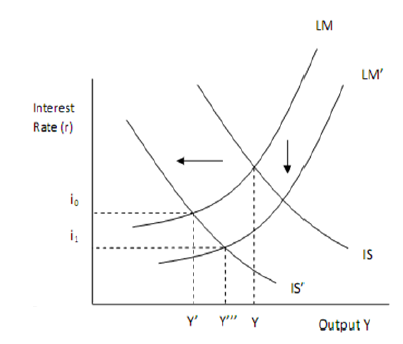
Great Depression is rightly perceived as the main stimulating factor behind the emergence of Keynesian framework and ISLM model and the model proved effective to deal with the crisis to a certain extent. However, a set of significant shortcomings associated with ISLM model such as neglecting expectations, static nature of the model, unrealistic closed-economy assumption, assuming prices to remain fixed etc. have led to the evolution of alternative models. Proposed by Robert Mundell and Marcus Fleming, the Mundell-Fleming model represents an economic model that explains the nature of relationship between the nominal exchange rate and the output of the economy in the short run. Traditionally, this model has been used to justify the argument that maintenance of fixed exchange rate, movement of free capital and independent monetary policy in a simultaneous manner is impossible to achieve. The main difference between Mundell-Fleming model and ISLM model relates to the fact that while ISLM model is effective under a closed-economy, Mundell-Fleming model attempts to analyse an open-economic system. In other words, unlike ISLM, impacts of international finance and international trade are acknowledged in Mundell-Fleming model. Different countries respondent the global economic crisis of 2007 – 2009 differently taking into account unique set of internal and external factors, however, macroeconomic responses to the crisis by many developed counties can be effectively explained with the use of ISLM model. Dramatic decline in the level of consumer spending which also caused the decline of consumer confidence in markets has facilitated the shift of IS curve in ISLM model to the left. Range of responses by governments to this event included reducing the level of interest rates significantly. For example, interest rates were reduced in US, UK and Japan to 0.25 per cent, 0.5 per cent and 0.1 per cent respectively. Reduction of the level of…

Pure monopoly refers to a situation where there is only one firm offering a specific type of product or service. However, instances of pure monopoly are very rare in modern markets due to the intensified level of globalisation of economies and anti-monopoly rules and regulations introduced by governments. Working monopoly refers to a situation where any company possesses more than one fourth of the market share. Certain firms are able to attain monopoly in the market due to possession of scare resources, special government grants under certain circumstances, possession of patents for innovations or as a result of merger of two or more large companies in the industry. Achievement of profit maximisation objective is easier by monopolistic firms compared to other market structure due to the lack of competition. In simple terms, consumers have no choice but to purchase products offered by monopolist firm due to the lack or even absence of alternative products in the market. Price discrimination can be divided into three categories: first degree, second degree, and third degree. First degree price discrimination is associated with inelastic markets where a certain business entity is in the position of pricing its products at different levels, at the same time selling to the whole market without competition, which is rare in practical levels. As it is illustrated in figure below, second degree price discrimination relates to elastic market where businesses offer different amounts of their products for different prices. Lastly, the third degree of price discrimination marks the case of combined market where different prices are set for different groups of consumers. Businesses can engage in price discrimination only if they possess certain degree of monopoly. In other words, monopolistic businesses use price discrimination strategies in order to increase the levels of abnormal profits. The degree of price discrimination…
